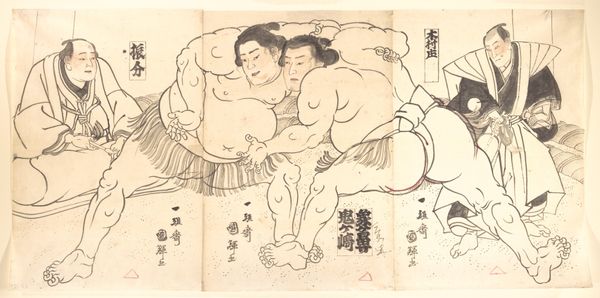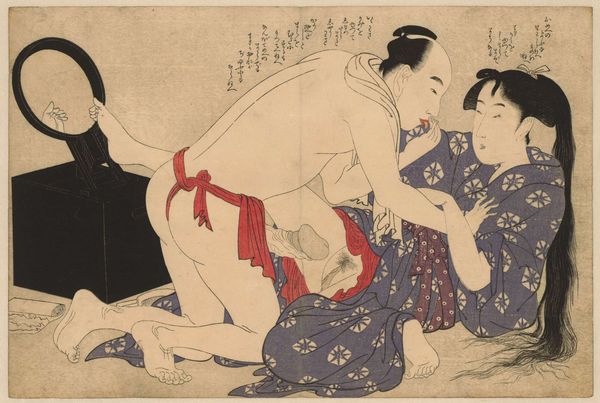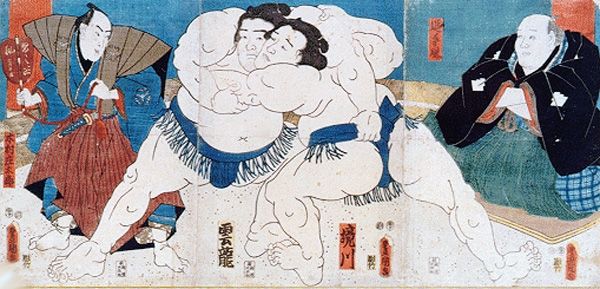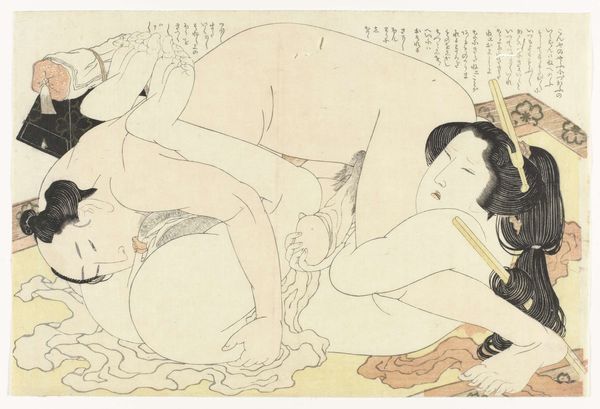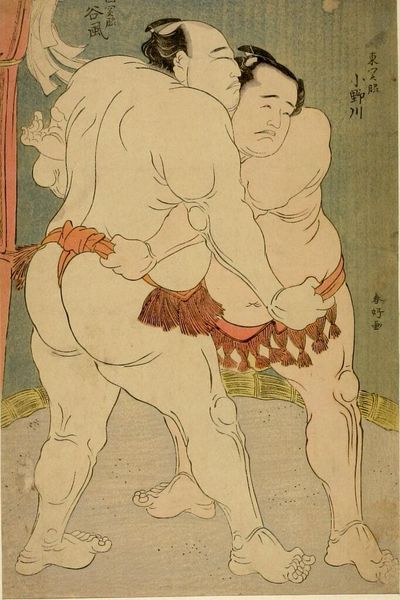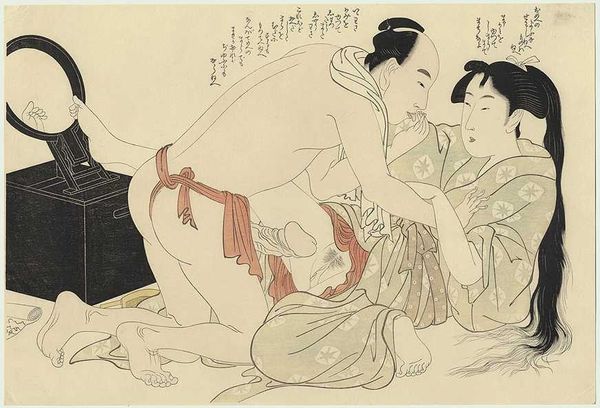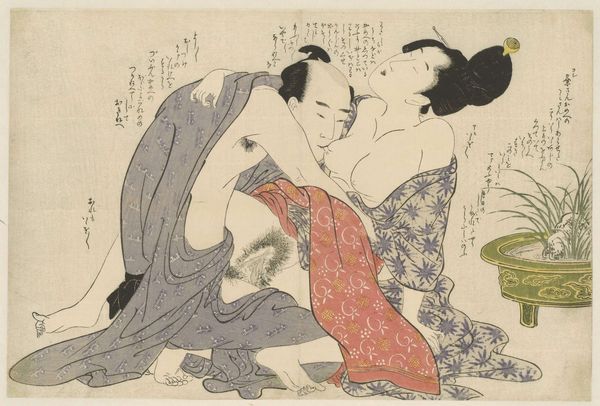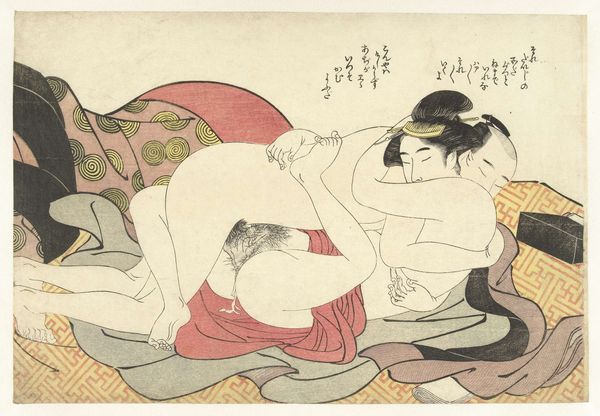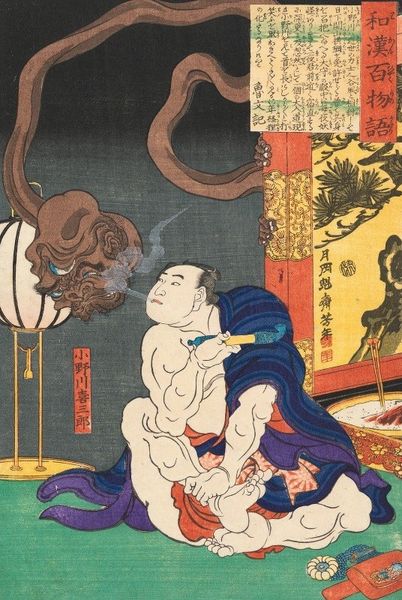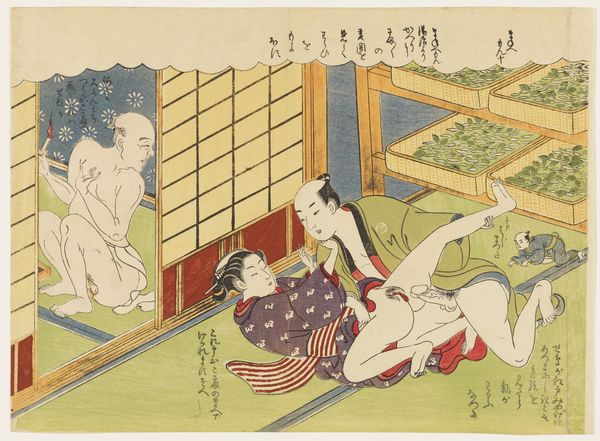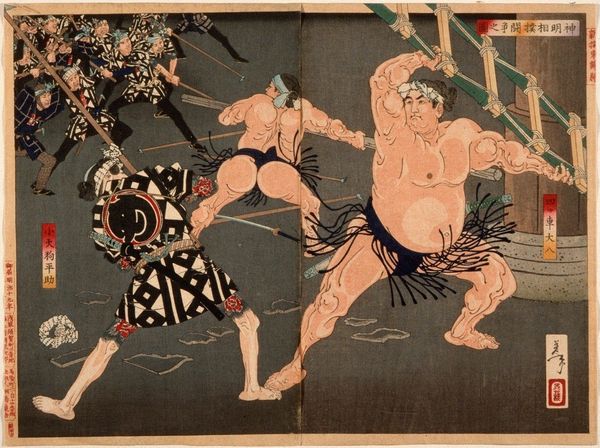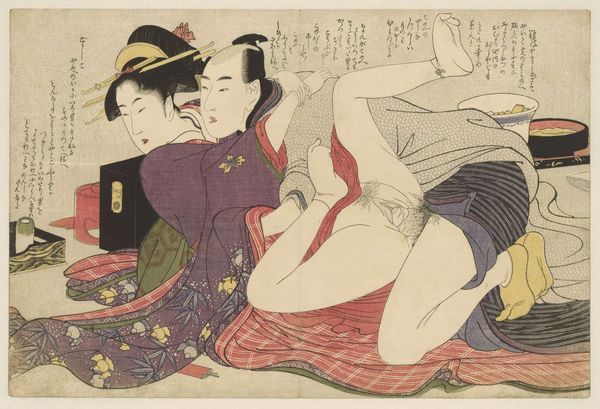
print, woodblock-print
#
portrait
# print
#
asian-art
#
ukiyo-e
#
figuration
#
male-portraits
#
woodblock-print
#
genre-painting
Copyright: Public domain
Editor: Here we have an arresting woodblock print entitled "Sumo" by Utagawa Kunisada. I find the stark physicality of the central wrestlers quite captivating. What strikes you most about this piece? Curator: It's fascinating to consider the material realities of Utagawa Kunisada's practice. Woodblock prints, especially ukiyo-e like this, were a product of collaboration and skilled labor. The artist didn't carve the block or even necessarily print it. This was a commercial enterprise involving artisans and publishers. Look at the clear lines, the controlled gradation of colors - those speak to highly skilled craftsmanship in service of a popular market. Editor: That's a great point about collaboration. How did this production model influence the aesthetic or the content we see? Curator: Precisely! Mass production enabled affordability and widespread distribution, reflecting the tastes and values of the rising merchant class in Edo-period Japan. Sumo wrestling was hugely popular entertainment, so depicting it made perfect sense from a marketing standpoint. Consider too the *types* of wood and inks used. Were there trade restrictions? Were these materials readily available, impacting cost? The consumer market drives production but so does material access and financial systems. Editor: So, thinking about consumption, was this piece considered high art at the time, or more of a popular commodity? Curator: That’s a very modern distinction. These prints blurred those lines, circulating in tea houses and among commoners. While *some* collectors appreciated the artistry, ukiyo-e prints were essentially advertisements or souvenirs, affordable and disposable. Analyzing the degradation of extant copies offers a direct lens into understanding how they were treated. What happens when we shift our focus from idealized artistic vision to a material lifespan rooted in specific historical markets and usage? Editor: That gives me a new way to consider prints like this, less as isolated masterpieces and more as part of a complex system of production and consumption. Thanks! Curator: Exactly! The focus on labor, material access and market distribution offers vital alternative viewpoints that challenge typical assumptions of fine art.
Comments
No comments
Be the first to comment and join the conversation on the ultimate creative platform.
